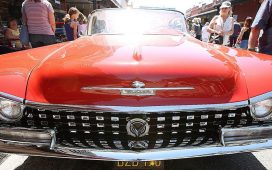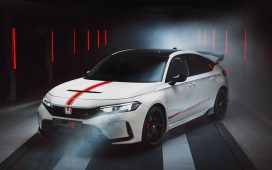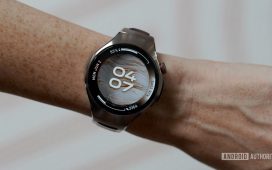Japan’s kei cars are the cutest vehicles on the road. I mean, just look at them. Could you picture a more perfect people mover if you tried? No, you can’t, and I’m not taking notes on that. They’re perfect. I know that, Japan knows that and apparently China does too—becuase EV giant BYD has its eyes set on the kei market.
Welcome back to Critical Materials, your daily roundup for all things electric and tech in the automotive space. On today’s docket: China is coming for Japan’s kei car; Uber could be the unlikely kingmaker in the Tesla vs Waymo battle; and electric semis could prove to be another nail in the coffin for diesel in China.
Let’s jump in.
30%: China’s BYD Goes After Kei Cars In Japan

Photo by: Kevin Williams/InsideEVs
According to a new report from the Financial Times, BYD’s head of Japan, Atsuki Tofukuji, says that he has identified an opportunity for the brand to wedge its way into Japan’s $18 billion kei car segment. And if this is anything like BYD’s dedication in other global markets, it’s likely that the automaker isn’t just planning to dip its toes in the water, but is figuring out a way to wage a full-on assault.
Here’s the Financial Times with the specifics:
BYD aims to loosen the decades-long dominance of the segment by Japanese carmakers including Toyota, Honda, and Nissan.
Atsuki Tofukuji, president of BYD Auto Japan, said it saw an opening for low-cost miniature EVs of a similar size to “Mr Bean’s Austin Mini Cooper”, as high taxes push up conventional fuel prices and petrol stations rapidly disappear in depopulating rural Japan.
“Kei cars fit the Japanese way of life extremely well,” he said in an interview with the Financial Times. “If customers properly understand the economic rationale, they are sufficiently willing to buy kei cars that aren’t made by the existing major brands.”
Chinese carmakers have been snatching sales away from Japanese carmakers in their traditional stronghold of south-east Asia, but the planned kei car is among BYD’s first to be designed for an overseas market without being sold first in China. Key details, such as driving range, price and the vehicle’s appearance, have yet to be unveiled.
BYD has been able to penetrate other global markets thanks to innovative products and extremely affordable prices. Thanks to rapid vertical integration and support from government subsidies, the automaker was able to quickly able to go from creating clones of the Mercedes-Benz W209 SL-Class to some of the most affordable, tech-packed and flat-out insane cars that the automotive world has ever seen.
But all of that innovation doesn’t mean instant success, especially in Japan’s cutest car segment. BYD has two huge problems to overcome if it expects to gain an advantage over Honda, Nissan, Suzuki, Toyota and the like.
First, much like China’s consumers have gravitated towards homegrown automakers, Japan’s buyers are very much deep-rooted and loyal to their country’s own brands. Automakers from foreign countries make up less than 6% of the Japanese car market, according to the FT. BYD in particular, which has been selling cars in Japan since 2013, delivered just 2,221 vehicles in Q1 2025—and that wasn’t due to a lack of manufacturing capacity.
Second, Japan isn’t really an EV-first country. Despite some other auto-focused Asia-Pacific countries diving head-first into EVs, Car buyers in Japan bought fewer than 60,000 electric cars in 2024. That might seem like a lot at first, but in the grand scheme of annual auto sales, that makes up less than 2% of the entire automotive market for the year.
This means that BYD not only has to penetrate a market where locals aren’t buying foreign cars, but also a segment that barely sells any cars to begin with. The only thing going for BYD is its lack of competition in this very specific market. In fact, the only direct electric competitor is the Nissan Sakura, which sells for around $18,100 (2.6 million JPY) and BYD’s offering is said to be cheaper than the BYD Dolphin, which comes in right around $20,000.
BYD reportedly plans to release its electric kei car during the second half of 2026. And if it can’t sell the kei car in Japan, Tofukuji says BYD could take the kei car on a world tour to Europe, India, and abroad to see if other markets will bite when offered a shoebox-sized car. I would.
60%: Uber Could Play Kingmaker In Waymo vs Tesla Robotaxi Battle

Photo by: InsideEVs
The urban sprawl of Austin is quickly turning into a sun-baked proving ground for autonomous cars. Waymo has been set up to deliver its ride-hailing services for quite some time now, while Tesla is preparing to launch its own competitor later this month. And as the two gear up for some epic robo-battle in the Lone Star State, there’s a third quiet player that could help to play kingmaker in the race for robotaxi supremacy.
See, Uber may have stopped developing its own robotaxis, but that doesn’t mean it’s out of the game. The ride-hailing service—which is best known for its gig work of allowing just about anybody to operate their own taxi on its network—has already added Waymo on its app so that drivers can dispatch a fully autonomous, driver-free ride at the press of a button. And that could prove to be a huge advantage as Tesla plays catch-up to Alphabet’s self-driving arm.
Tesla’s Head of Autopilot and AI Software, Ashok Elluswamy, recently admitted that Tesla was still lagging “a couple of years” behind Waymo. Not only does Tesla need to ensure that its stripped-down, vision-only tech stack is up to the job, but it also has to build out all of the infrastructure that it takes to operate a successful robotaxi service. Teleoperators, cleaning crews, charging infrastructure, and repair facilities are all a necessity. Perhaps that huge investment is why General Motors pulled Cruise from the running last year.
Uber playing matchmaker is also a gigantic deal. See, everyone knows about Uber. You want a ride share? Open that app up and someone will be there soon enough. By baking Waymo into the Uber app already for Austinites, it makes the app a single pane of glass to order a ride. If Tesla doesn’t get that same love, well, it won’t be game over, but just add to the layers of complexity that the automaker has to overcome.
Here’s the problem, though—Tesla has already snubbed Uber in a potential partnership. Uber CEO Dara Khosrowshahi said that it would keep the door open for Tesla, but the automaker has already told Uber it wants to go into the whole ride-hailing game on its own. It’s unclear how that might affect Tesla’s long-term success in the robotaxi market. The move is certainly on-brand for Tesla, though.
Walter Piecyk, analyst at research firm LightShed Partners, believes that Tesla won’t be neck-and-neck with Waymo on day one. He does, however, believe that it “won’t take them much to catch up” to the industry leader. And one of the keys to success is ultimately Uber and its long-term vision of being an all-encompassing ride-hailing network aggregator, whether that be for people or robotaxis.
“There should be a focus on ‘what is the impact on Uber,'” said Piecyk in an interview with Automotive News. “Watch what Uber does to survive and continue to be the network of choice for consumers.”
90%: Diesel Demand Is Nosediving in China

Photo by: CATL
The days of diesel-pluming, jake-braking semi trucks are coming to a close in China. Well, not entirely, but experts watching the market see the direction that China’s heavy vehicle industry is headed and diesel-powered semis? Yeah, not in the cards, apparently. Instead, China’s future trucks will be purring down the road with the quiet hum of tires and electric motors.
China is the world’s largest importer of oil, according to the U.S. Energy Information Administration. Its consumption of oil has steadily increased over the past decade (barring a slight dip following the Covid-19 pandemic) and imports around 11.3 million barrels of crude each day. A significant amount of that oil is refined into diesel, a staple in Chinese industrial machinery. However, that need is slowly being unplugged as more companies are taking advantage of government subsidies to outfit their operations with cleaner battery-powered equipment.
We’ve talked about this before, in fact. Chinese battery giant CATL predicts that EVs would begin outselling combustion-powered heavy-duty trucks as early as 2028 (a metric it used to justify building more industrial battery-swapping stations in the country). Plus, with trucks touting massive 729 kilowatt-hour batteries, nobody could blame them.
China’s push away from diesel is already showing results. Year-over-year, diesel demand has dropped 8.4% as of April. BloombergNEF believes that if trends continue, consumption will drop an additional 26% by the end of the decade.
Bloomberg has more:
Electric trucks accounted for 22% of light-duty commercial vehicle sales in April, from 13% in the same month last year, according to BloombergNEF. For bigger rigs, the increase is even more pronounced, with sales trebling to 15% of the total. Diesel demand is being menaced on two fronts, as liquefied natural gas had already been making inroads as a trucking fuel in recent years.
As the world’s biggest oil importer, major shifts in China’s transport sector create waves on global energy markets. The threat to diesel is stark. More than 70% of the fuel’s consumption in China is tied up in road freight or the vehicles that work mines and construction sites, according to Amy Sun, an analyst at GL Consulting.
This isn’t just some fluke or market trend. This is China’s government strategically working to influence the direction that companies (and consumers) sway when purchasing new vehicles. Tax breaks, trade-in programs and subsidies are all being pushed to help folks move away from vehicles that emit tailpipe emissions to ones powered by electrons instead.
The goal is simple: cut foreign oil dependence and continue to ramp up its own EV sector. And, hey, why not flex some geopolitical muscles while it’s at it?
100%: Could BYD Unleash A Flood Of Cheap Kei Cars On The World?

Photo by: BYD
Okay, hear me out. I know you’re tired of me praising them by now, but the world needs more kei cars. Cars are expensive overall, and these tiny little people movers? They could be the solution that we never saw coming.
BYD thinks that these small cars could work wonders outside of Japan. In fact, the automaker specifically mentioned Europe and India when discussing potential markets to target with its upcoming tiny EV. Not the U.S., of course—at least not yet—but if the rest of the world bites, maybe we’ll get something here at home gratis of another OEM (as unlikely as that sounds, one can wish.)
So here’s where I turn to you. Could you see the world adopting affordable battery-powered kei cars in 2025? Why or why not? Let me know in the comments.






